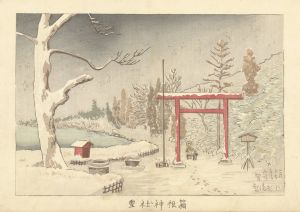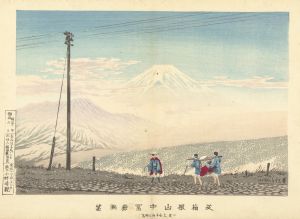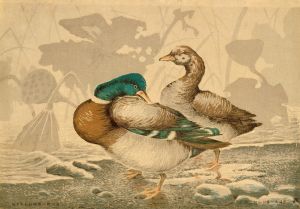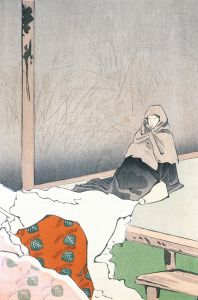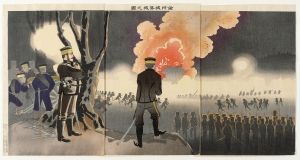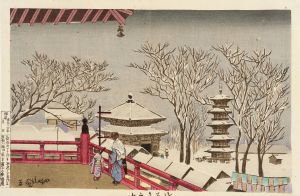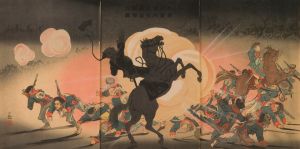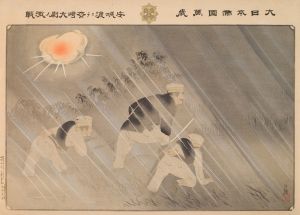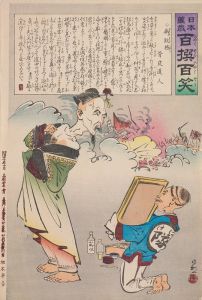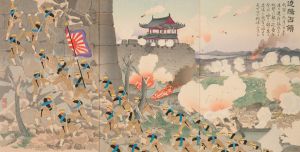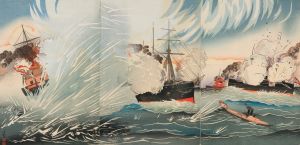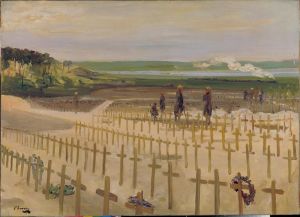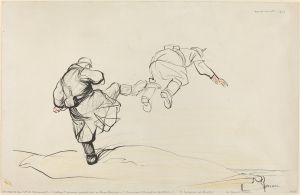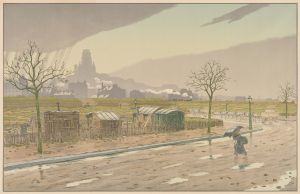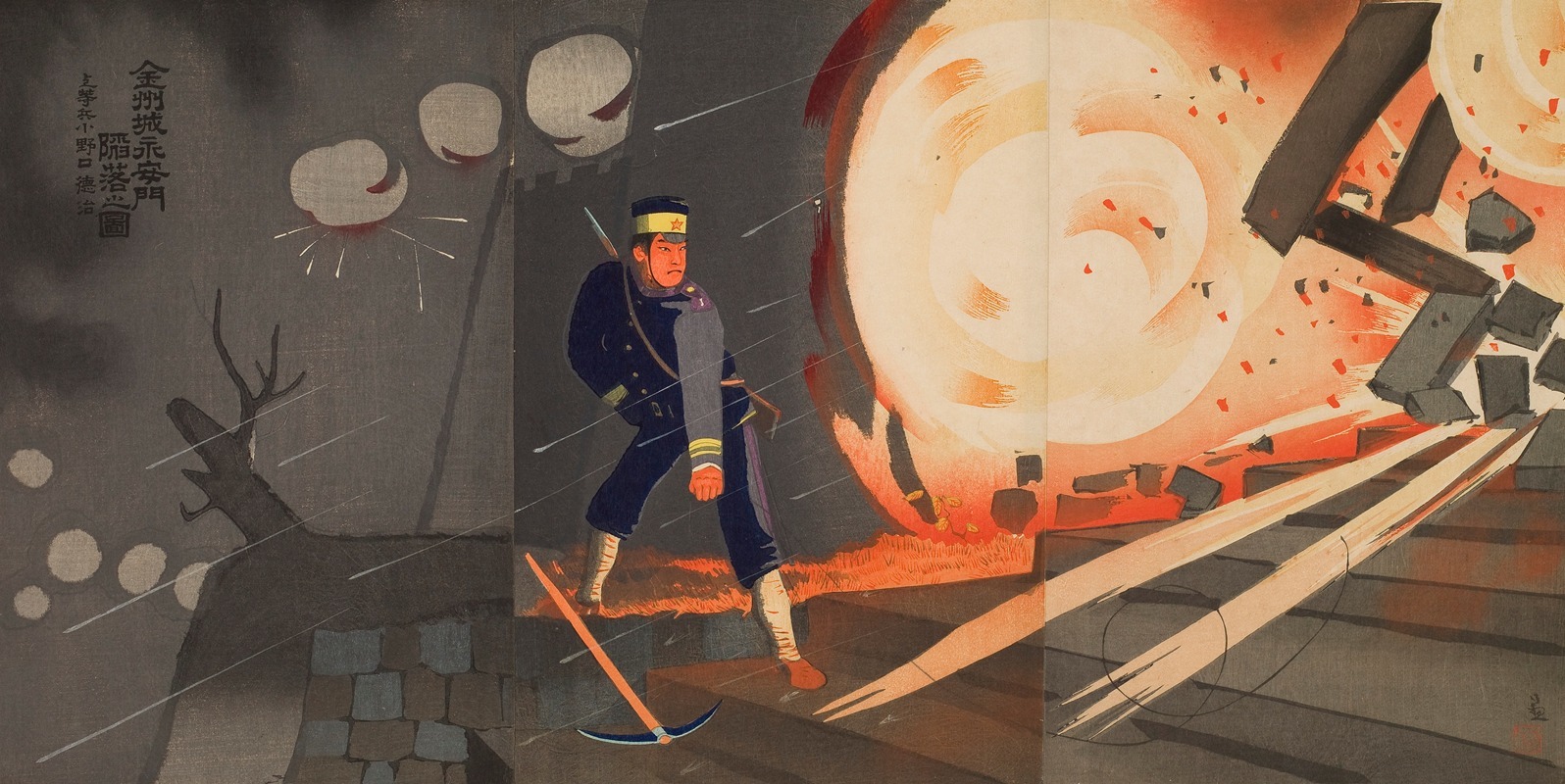
The Fall of Jinzhou Fortress; Private First Class Onoguchi Tokuji
A hand-painted replica of Kobayashi Kiyochika’s masterpiece The Fall of Jinzhou Fortress; Private First Class Onoguchi Tokuji, meticulously crafted by professional artists to capture the true essence of the original. Each piece is created with museum-quality canvas and rare mineral pigments, carefully painted by experienced artists with delicate brushstrokes and rich, layered colors to perfectly recreate the texture of the original artwork. Unlike machine-printed reproductions, this hand-painted version brings the painting to life, infused with the artist’s emotions and skill in every stroke. Whether for personal collection or home decoration, it instantly elevates the artistic atmosphere of any space.
"The Fall of Jinzhou Fortress; Private First Class Onoguchi Tokuji" is a woodblock print by the renowned Japanese artist Kobayashi Kiyochika. Kiyochika, active during the late 19th and early 20th centuries, is celebrated for his work in ukiyo-e, a genre of Japanese art that flourished from the 17th through 19th centuries. His works often depicted scenes of modernity and war, capturing the transformative period of the Meiji Restoration in Japan.
This particular print is part of a series that Kiyochika created to document the First Sino-Japanese War (1894-1895), a conflict between the Qing Dynasty of China and the Empire of Japan primarily over influence in Korea. The war marked a significant shift in regional power, showcasing Japan's modernization and military prowess following the Meiji Restoration.
"The Fall of Jinzhou Fortress" specifically illustrates a moment from the Battle of Jinzhou, which took place in 1894. Jinzhou, a strategic location in the Liaodong Peninsula, was a focal point during the war. The capture of Jinzhou by Japanese forces was a critical victory, contributing to Japan's eventual success in the conflict. Kiyochika's print captures the intensity and drama of the battle, reflecting both the chaos of warfare and the disciplined advance of Japanese troops.
The inclusion of Private First Class Onoguchi Tokuji in the title highlights the individual heroism and personal stories within the broader narrative of war. While specific details about Onoguchi Tokuji's actions during the battle are not widely documented, the mention of his name suggests a focus on the valor and contributions of individual soldiers, a common theme in war art that seeks to humanize and personalize the broader conflict.
Kiyochika's work is characterized by its dynamic composition and use of light and shadow, techniques that he adapted from Western art influences. His prints often convey a sense of immediacy and movement, drawing the viewer into the scene. In "The Fall of Jinzhou Fortress," these elements are likely employed to emphasize the urgency and ferocity of the battle.
This print, like many of Kiyochika's works, serves as both a historical document and a piece of artistic expression. It reflects the nationalistic fervor of the time, as well as the pride in Japan's military achievements. Additionally, it provides insight into the cultural and political climate of Meiji-era Japan, a period marked by rapid modernization and a reassertion of national identity.
Kiyochika's contributions to the art of ukiyo-e and his depictions of the First Sino-Japanese War remain significant for their historical and artistic value. His works continue to be studied for their unique blend of traditional Japanese techniques and Western influences, as well as their portrayal of a pivotal era in Japanese history.





